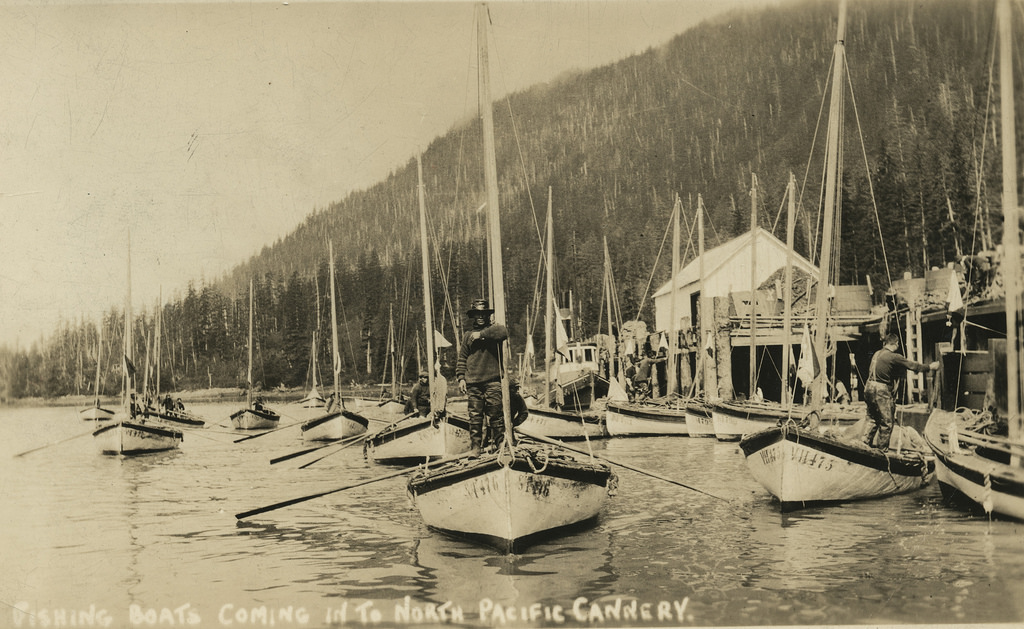By the early 1950s, salmon populations were a major area of concern for the Department of Fisheries. The Nass and Skeena rivers were drawing considerable attention for their salmon runs. In 1954, the Skeena Salmon Management Committee (SSMC) was created for the purpose to review scientific data as well as establish fishing regulations. This was due to the many canneries located in this region. The North Pacific, Arrandale, Sunnyside, Cassiar, and Inverness (etc.) were all located in a very close radius along the Skeena river near Port Edward. The SSMC heavily relied upon estimates of returning salmon species to determine whether fishing regulations were required. The creation of the SSMC echoed a reoccurring theme as the Ministry of Fisheries was becoming increasingly dependent on science to understand nature, which was an extremely controversial topic. In their 1959 annual report, the SSMC estimated that the 1959 Skeena sockeye run would number around 1,000,000, with the majority being five-year-old’s. This was classified as an abundant amount of sockeye. In contrast, the SSMC estimated that the 1959 Skeena pink run would only be around 2,200,000, when they previously anticipated to have roughly 4,000,000. Both approximations contributed to the development of fishing regulations.
These regulations of the SSMC were based on two important questions: “What escapements are required to provide the greatest return to the fishery? How may the fish be regulated to provide such escapement?” For example, even though the 1959 Skeena sockeye run was estimated to be abundant, the beginning of the run was very light which forced harsh regulations aimed at protecting the sockeye. These regulations usually consisted of complete fishing closures for many days. By July 26, the SSMC projected that roughly 75,000 sockeyes had been caught; however, 355,000 had escaped up river. At the end of the fishing season, the SSMC had totaled the catch to be 190,000, while escapement approximately 870,000. In 1960, the SSMC released a report that was much worse than 1959’s projections. They estimated that the Skeena sockeye run would primarily be made up of four-year old fish numbering around 500,000. There would only be 200,000 five-year old sockeyes returning since 1955 was the worst recorded salmon run in the history of the Skeena. With a combined total of an estimated 700,000 sockeye in 1960, the SSMC expected that these numbers would only be sufficient for escapements. The Skeena pink run was expected to consist of 2,000,000, which was very close to the previous year of 2,200,000. To combat declining expected returns, the SSMC proposed several regulations in 1960. These included restrictions on the size of gillnets; a 72 hour weekly closed period from 6:00pm on Thursday to 6:00pm on Sunday; and further closure periods and restrictions on any type of gillnets after July 17, 1960 (July 17-July 31- 106-hour weekly closures from Wednesday at 8:00am to 6:00pm on Sunday, July 31- August 28- 96-hour weekly closures from 6:00pm on Wednesday to 6:00pm on Sunday, August 28- to end of season- 72-hour weekly closures from 6:00pm on Thursday to 6:00pm on Sunday).
From analyzing these figures, it becomes apparent why the SSMC tactics were heavily scrutinized. They severely restricted the access of fishermen based on what many considered to be questionable evidence. This was largely in part due to the way in which the salmon were tracked. Salmon had extremely complex life cycles as their habitats included rivers, lakes, and oceans. The many different environments of the sockeye meant that survival rates had a critical impact on returning fish levels. Due to the constant disapproval of many fishermen, the SSMC organized a series of meetings that took place in the 1950’s and the 1960’s. Many aboriginal fishermen and other critics challenged the SSMC by arguing more efforts need to be targeted towards the salmon in their ocean habitat rather than the river. For example, Walter Harris, a Gitxsan hereditary chief from Kispiox, argued that either more government resources needed to be allocated to validate the legitimacy of evidence in which these regulations were based upon or restrictions of fishing times needed to be revoked. Additionally, James Fowler of Kitwanga elaborated further stating that scientists tagging methods were contributing to the poor fishing seasons as it noticeably affected their health.
When contrasting the rise of regulations by the SSMC in the Skeena and Nass area throughout the 1950’s and the 1960’s with closures of canneries such as the North Pacific and Sunnyside, a correlation seems to be present. Both the North Pacific and Sunnyside canneries ceased operations in 1968. Although there were a variety of factors at play that led to their shut down, it would be naïve to state that the rise in regulations imposed by the SSMC in the 1960’s did not play a role. It severely impacted the fishing industry, and made it very difficult for the canneries to turn a profit from canning salmon as there were so many restrictions regarding the catching of fish. These results not only affected the fishing industry, but also the livelihood of first nation fishermen, of which whom many relied upon for survival.
Works Cited
Report from Skeena Salmon Management Committee: Tentative Regulations for 1960, MS 42 box, North Pacific Cannery Archives, Port Edward, BC.
Wright, Miriam. “Aboriginal Gillnet Fishers, Science, and the State: Salmon Fisheries Management on the Nass and Skeena Rivers, British Columbia, 1951-1961.” Journal of Canadian Studies 44.1 (2010): 5-35.
